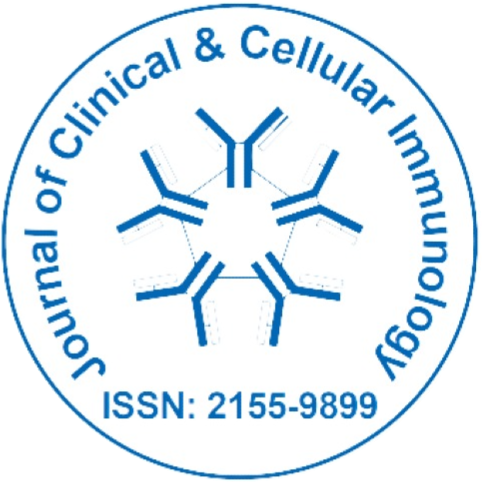
Journal d'immunologie clinique et cellulaire
Libre accès
ISSN: 2155-9899

ISSN: 2155-9899
Lerner A, Kushak RI, Jeremias P, Matthias T et Winter HS
Français De nombreux aspects sont communs à la maladie cœliaque et à l'entéropathie auto-immune : symptômes, diagnostic par biomarqueurs sérologiques, résultats endoscopiques, pathologie intestinale, diagnostic différentiel et traitement pharmaceutique dans certains cas. Des anticorps anti-transglutaminase tissulaire ont été décrits chez plus de 30 % des patients atteints d'entéropathie auto-immune, mais aucun anticorps anti-entérocyte n'a été détecté dans une petite population de patients cœliaques pédiatriques.
Le but de la présente étude était d'identifier les anticorps anti-entérocytes chez des patients pédiatriques atteints de maladie cœliaque bien caractérisée par rapport à un groupe d'enfants souffrant de douleurs abdominales récurrentes.
Matériel et méthodes : la maladie cœliaque (N=38) a été diagnostiquée sur la base d'une sérologie cœliaque positive (anticorps anti-néoépitope anti-transglutaminase tissulaire (Aesku*) et/ou anti-endomysium) et d'une biopsie de l'intestin grêle compatible avec la maladie cœliaque.
Français Le groupe témoin était composé de patients du même âge et du même sexe (N = 41) ayant des antécédents de douleurs abdominales, une sérologie cœliaque négative, une endoscopie supérieure normale et une histologie de l'intestin grêle normale.
La détection des anticorps anti-entérocytes a été réalisée par Western blot. Les homogénats de muqueuse intestinale humaine normale ont été électrophorésés sur SDS-PAGE à 7,5 % et transférés sur des membranes de nitrocellulose. Les buvards ont été traités avec des sérums de patients en aveugle et développés à l'aide d'un kit ELISA.
Résultats : Dans le groupe pédiatrique cœliaque, 3/35 (8,6 %) contre 6/35 (17,1 %) dans le groupe non cœliaque étaient positifs pour les anticorps anti-entérocytes. Aucune différence statistiquement significative dans la présence d'anticorps anti-entérocytes chez les patients atteints de la maladie cœliaque.
Conclusions : Environ 8 % des enfants atteints de la maladie cœliaque peuvent avoir des anticorps contre les entérocytes, mais la fréquence n'est pas augmentée par rapport aux enfants souffrant de douleurs abdominales récurrentes.